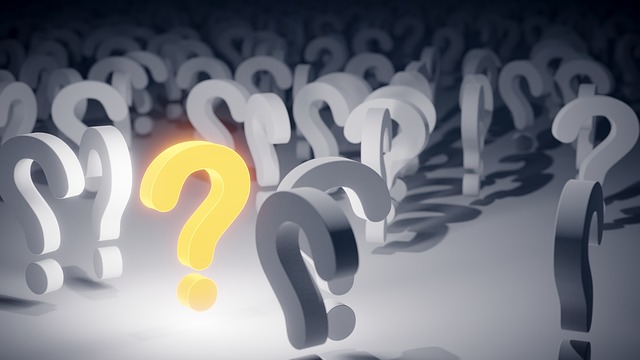Discovering Your Voice: How to Master Different Tones in Nonfiction Writing
In this article, we’re going to explore the world of tone in nonfiction writing.
Tone often takes a backseat to other writing elements like grammar, structure, and style. However, mastering tone can be a powerful tool in your writing arsenal, helping you create a lasting impression on your readers and effectively convey your message.
When you think about it, tone is the voice of your writing–it sets the mood, reveals your emotional perspective, and gives life to your words.
By using different tones, you can communicate complex ideas, evoke emotions, and persuade your readers to see things from your point of view. In other words, your choice of tone can make or break your connection with your audience.
In this guide, we’ll explore the various tones you can use in your nonfiction writing, along with techniques for establishing and adjusting tone to suit different purposes and audiences, plus some examples of tone in action.
By the end of the article, you’ll have a better understanding of how to harness the power of tone to create compelling, engaging, and emotionally resonant pieces that truly resonate with your readers.
Let’s get started!
Identifying Tones in Writing
As a nonfiction writer, you already know that choosing the right tone is crucial for connecting with your audience and conveying your message effectively. But what about when you’re on the other side of the equation, as a reader?
Being able to identify tones in writing is an essential skill that can enhance your reading experience, help you appreciate the nuances of an author’s voice, and even inspire your own writing style.
By honing your ability to identify different tones, you’ll be able to uncover the hidden layers of meaning and emotion beneath the surface of the text, enriching your understanding and appreciation of the written word.
So, let’s dive in and explore the five most prominent types of tones in nonfiction writing:
1. Informative tone
When your primary goal is to provide your readers with valuable information, the informative tone is your best bet. This tone is all about presenting facts and data in a clear, concise, and well-structured manner.
It’s essential to remain objective and unbiased, allowing your readers to absorb the information without feeling swayed by personal opinions.
To achieve an effective informative tone, focus on using precise language, avoiding unnecessary jargon, and breaking complex ideas into digestible chunks. Visual aids, such as charts or graphs, can also enhance your message and make your content more accessible.
2. Persuasive tone
If you’re passionate about a topic and want to sway your readers to adopt your point of view, the persuasive tone is the way to go. This tone relies on emotive language, compelling evidence, and well-constructed arguments to build a convincing case.
To create a strong persuasive tone, appeal to your readers’ emotions and logic, address counterarguments, and use rhetorical devices, such as anecdotes, analogies, and repetition.
Keep in mind that building trust with your audience is vital, so be sure to provide credible sources and maintain a respectful tone throughout.
3. Entertaining tone

When your aim is to engage and amuse your readers while still sharing valuable information, the entertaining tone comes into play. This tone is characterized by a lighthearted, witty, and even humorous approach that keeps your audience hooked.
To craft an entertaining tone, experiment with wordplay, incorporate anecdotes or personal stories, and use vivid descriptions that paint a picture in your readers’ minds.
Remember, the key is to strike a balance between entertainment and information, ensuring your readers come away both informed and delighted.
4. Inspirational tone
If your goal is to inspire and motivate your readers, the inspirational tone is the one for you. This tone uses powerful, uplifting language and vivid imagery to evoke emotions, stir the imagination, and ignite a fire within your audience.
To create an effective inspirational tone, share personal experiences, use emotive storytelling, and incorporate quotes from influential figures.
Also, focus on painting a picture of a better future or describing the transformative effects of taking action, encouraging your readers to believe in their potential and chase their dreams.
5. Conversational tone
When you’re looking to connect with your readers on a more personal level, the conversational tone is the perfect choice. This tone is characterized by a friendly, informal, and relatable style that feels like a genuine dialogue between you and your audience.
To achieve a conversational tone, use contractions, ask questions, and address your readers directly (using “you” and “we”). Don’t shy away from sharing personal insights or opinions, as they can help create a sense of authenticity and intimacy.
Just remember to maintain a balance between being conversational and providing valuable information, ensuring your content remains engaging and informative.
Techniques for Establishing Tone
Now that you’re familiar with the different tones, let’s explore some techniques to help you establish the right tone for your writing:
Word choice
In writing, words are the building blocks that create the foundation of your tone. Choosing the right words can make all the difference in conveying your desired emotional impact.
Below, we’ll explore how connotations, colloquialisms, precision, and tone-specific vocabulary can shape your writing, helping you craft a voice that truly resonates with your audience:
- Connotations: Choose words that carry the emotional weight you want to convey. For example, “slim” and “skinny” may have similar meanings, but “slim” sounds more positive.
- Colloquialisms and contractions: Using informal language and contractions can make your writing sound more conversational and relatable.
- Precision: Opt for specific, concrete words rather than vague or abstract terms to create a vivid and engaging picture for your readers.
- Jargon: Be mindful of using technical terms or industry jargon that might alienate or confuse your audience. If necessary, provide clear explanations or use simpler alternatives.
- Tone-specific vocabulary: Choose words that align with your desired tone. For instance, use powerful, evocative words for an inspirational tone or humorous expressions for an entertaining tone.
Sentence structure

The structure of your sentences plays a significant role in defining the tone of your writing. From varying sentence lengths to using active voice and parallelism, crafting well-structured sentences can create a natural rhythm and flow that captivates your readers.
Below, we’ll cover the techniques that help you shape your tone through sentence structure, allowing you to build a powerful and engaging narrative:
- Varied sentence lengths: Mix up your sentence lengths to keep your writing engaging and prevent it from sounding monotonous.
- Active voice: Stick to the active voice as much as possible for a more dynamic and direct tone.
- Parallelism: Employ parallel structures in your sentences to create a sense of rhythm and balance, which can make your writing more persuasive and memorable.
- Clarity and simplicity: Prioritize clear, concise sentences that are easy to understand, especially when dealing with complex ideas or information.
- Rhetorical devices: Use rhetorical devices, such as repetition, alliteration, or analogies, to create emphasis and enhance the impact of your message.
Punctuation
Punctuation marks may seem like small details, but they hold immense power in setting the tone of your writing. From creating curiosity with question marks to adding depth and nuance with em dashes and parentheses, punctuation can drastically change how your words are perceived.
Below, we’ll explore the impact of punctuation on tone, providing you with the tools to fine-tune your writing and leave a lasting impression on your readers:
- Use and impact of punctuation marks: Punctuation can change the tone of your writing. For example, a period can make a sentence feel final, while a question mark can create curiosity.
- Minimal use of exclamation marks, rhetorical questions, and ellipses: Overusing these elements can distract from your message, so use them sparingly.
- Comma usage: Proper use of commas can help clarify your meaning and create a natural flow in your writing. Be aware of comma splices and run-on sentences.
- Em dashes and parentheses: These punctuation marks can be used to insert additional information or asides, adding depth and nuance to your writing.
- Colons and semicolons: Use colons to introduce a list or explanation, and semicolons to link closely related independent clauses. These punctuation marks can help create a more sophisticated tone when used appropriately.
Crafting Your Tone: Tips and Techniques
Now that you’re familiar with the various tones in nonfiction writing and the elements that contribute to tone, it’s time to dive into some tips and techniques to help you craft your desired tone in your own writing.
By mastering the following strategies, you’ll be well-equipped to create a distinct and engaging voice that resonates with your readers and brings your content to life:
- Know your audience: Before you start writing, take the time to understand your target audience. Consider their interests, preferences, and expectations, and tailor your tone accordingly. A well-chosen tone that resonates with your audience will create a more powerful and memorable reading experience.
- Be consistent: Once you’ve chosen a tone, aim to maintain it throughout your piece. Consistency in tone helps create a cohesive, polished, and professional impression. However, don’t be afraid to make subtle adjustments as needed, especially if you’re tackling different topics or addressing multiple audiences within the same piece.
- Read your work aloud: One of the most effective ways to fine-tune your tone is to read your writing out loud. This can help you identify any awkward phrasing, inconsistencies, or monotonous sections that need improvement. As you read, listen for the natural rhythm and flow of your words, and adjust your word choice, sentence structure, and punctuation as needed.
- Seek feedback: Share your work with others, such as writing groups, peers, or mentors, and ask for their thoughts on your tone. Constructive feedback can provide valuable insights into how your writing comes across to others and help you refine your tone to better achieve your goals.
- Revise and refine: Remember that writing is a process, and it’s essential to revisit and revise your work to ensure your tone is consistent, effective, and engaging. As you edit, pay close attention to your word choice, sentence structure, and punctuation, making adjustments as needed to enhance your tone.
Putting It All Together: Creating a Cohesive and Engaging Tone

To help you gain a deeper understanding of how tone works in nonfiction writing, let’s take a look at some examples of tone in action.
Each example will demonstrate a different tone, showcasing how word choice, sentence structure, and punctuation can be used to create a distinct and engaging voice:
Informative tone example:
“The global bee population has been steadily declining over the past several decades, posing a significant threat to the world’s food supply. According to recent studies, the primary factors contributing to this decline include habitat loss, pesticide exposure, and climate change. By implementing sustainable agricultural practices and promoting pollinator-friendly habitats, it’s possible to mitigate these threats and support a healthy bee population.”
Persuasive tone example:
“Imagine a world without the buzz of bees or the vibrant colors of wildflowers. This bleak reality is closer than you might think, as bee populations are plummeting at an alarming rate. But there’s still hope! By embracing eco-friendly farming methods and creating pollinator havens in our own backyards, we can make a difference and save these essential creatures from the brink of extinction.”
Entertaining tone example:
“Picture this: bees wearing tiny backpacks, buzzing around a field of flowers like diligent students on a field trip. Sounds like something out of a cartoon, right? Well, believe it or not, scientists have actually outfitted bees with miniature sensors to track their movements and gather data on their rapidly dwindling populations. It’s a fascinating and slightly adorable approach to understanding a very serious issue.”
Inspirational tone example:
“The humble bee, small and unassuming, is a symbol of hope and resilience. Despite facing immense challenges, from pesticides to habitat loss, these tiny warriors continue to pollinate our crops and keep our ecosystems thriving. Their unwavering determination should inspire us to take action, protect their habitats, and ensure a brighter future for both bees and humanity. Together, we can create a world where these extraordinary creatures flourish, safeguarding our planet for generations to come.”
Conversational tone example:
“Hey, have you heard about the buzz around bees lately? It turns out these little guys are in trouble, and that’s a big deal for us too. You see, they’re responsible for pollinating a huge chunk of our food, so we need to help them out. Let’s talk about what we can do to make their lives a bit easier, from planting pollinator-friendly gardens to ditching harmful pesticides. Trust me, the bees will thank us for it!”
In Conclusion
Understanding and mastering different tones in nonfiction writing can be a game-changer for your work. It not only adds depth and versatility to your writing but also helps you establish a strong connection with your readers.
When you experiment with various tones, always remember to keep the needs and preferences of your target audience in mind.
The more you understand your readers, the better you’ll be able to tailor your tone and messaging to their expectations, creating a more satisfying experience for them.
Moreover, honing your ability to adjust your tone according to different projects and contexts will make you a more versatile and effective nonfiction writer.
So, go forth and experiment with using different tones in writing. By doing so, you’ll not only enrich your writing but also create a more profound impact on your readers, leaving them feeling informed, inspired, and eager for more.

Harry Wallett is the Managing Director of Cascadia Author Services. He has a decade of experience as the Founder and Managing Director of Relay Publishing, which has sold over 3 million copies of books in all genres for its authors, and looks after a team of 50+ industry professionals working across the world.
Harry is inspired by the process of book creation and is passionate about the stories and characters behind the prose. He loves working with the writers and has shepherded 1000s of titles to publication over the years. He knows first-hand what it takes to not only create an unputdownable book, but also how to get it into the hands of the right readers for success.
Books are still one of the most powerful mediums to communicate ideas and establish indisputable authority in a field, boosting your reach and stature. But publishing isn’t a quick and easy process—nor should it be, or everyone would do it!








Leave a Reply